|
Whether you are searching for a holiday gift or a tasty sip to pair with a meal, I recommend the following five wines from Argentina, Italy, Oregon, Washington, and Virginia to add to your shopping list! Unánime Signature Malbec 2018 Mascota Vineyards is located in La Consulta, San Carlos, a small wine-growing sub-region in the southern Uco Valley of Mendoza, Argentina. Winemaker Rodolfo Sadler founded Mascota and has crafted wines for over 30 years. This 100% Malbec is aged for 14 months in French oak barrels. Nose: Violets, fresh red fruit, and baking spice. Palate: Bing cherries, red plum, with a hint of dark berries and subtle notes of dark chocolate, espresso, and pepper on a lengthy finish. Smooth and balanced with complex layers. Alcohol: 14.5% SRP: $40 Pairing suggestions: Hearty stews, roasted meat, fowl, or mushroom risotto. Intrinsic Red Blend 2021 Intrinsic Wine Co is a Washington state wine brand created by Juan Muñoz Oca, head winemaker at Columbia Crest, and his team. Columbia Crest and Intrinsic are both owned by the largest wine company in Washington, Chateau Ste. Michelle Wine Estates. According to available information, the Intrinsic Red Blend 2021 is a blend of Malbec, Cabernet Franc, and Cabernet Sauvignon, originating from the Columbia Valley region of Washington state. Nose: Lovely notes of raspberry, dark cherry, and sweet plums, along with hints of violet, tobacco, and herbs. Palate: This rich and juicy blend shows off notes of chocolate, espresso beans, and pepper that blend well with ripe fruit. Silky tannins and well-balanced acidity lead to a long finish with spice and berries lingering on the palate. Alcohol: 14.5% SRP: $20 Pairing suggestions: Sip on its own or head to the dessert table with your glass! FIOL Prosecco DOC Extra Dry FIOL (pronounced FEE-yol) means “son” in Venetian dialect and “chap” in English. FIOL was founded in 2011 by Gian Luca Passi and co-founder Giovanni Ciani Bassetti. They are childhood friends who grew up surrounded by Prosecco. “Most local winemakers have been drinking sparkling wine for 50 years and need an extraordinarily strong bubble to really feel it. We wanted something gentler, more subtle, more fruity.” says Gian Luca Passi.” This sparkling wine is 100% Glera. Prosecco DOC requires a minimum 30-day secondary fermentation in tank. This wine remains in tank 40 days for extra depth and complexity. Nose: Green apples, a touch of white flowers, and citrus. Palate: Smooth bubbles with emphasis on the grape. It is crisp and refreshing with notes of apple, pear, minerality, and a touch of lemon zest. Alcohol: 11% SRP: $19 Pairing suggestions: Enjoy as an aperitif, in cocktails, or with appetizers, entrees, and dessert! Appassionata Andante Pinot Noir 2017 J. Christopher Winery, located in northern Willamette Valley, Oregon, is owned by iconic winemaker Erni Loosen, creator and owner of Germany’s Dr. Loosen and Villa Wolf estates. Following his passion for Pinot Noir, Erni set his sights on J. Christopher, eventually purchasing 40 acres and planting the Appassionata Vineyard. The grapes for this 100% Pinot Noir are sourced from 33-year-old vines in the Dundee Hills appellation. The wine was aged for 20 months in French oak barriques (25% new). The wine is released five years after vintage. Andante means ‘gently, unhurried.’ Nose: Exotic flowers, brioche, red berries, red plums, baking spice, herbal notes, and a whiff of orange. Palate: This is a lively wine that balances delicate and savory. Silky texture with bright cherry, pomegranate, baking spice, and orange zest. A long and tasty finish awaits. Alcohol: 13.5% SRP: $135 Pairing suggestions: Roasted fatty fish such as salmon, stuffed artichokes, duck, grilled meat, venison, and most cheese. Early Mountain Rise 2021 Early Mountain Vineyards is owned by Jean Case, who started the company in 2012. They are located in the foothills of the Blue Ridge Mountains in Madison, Virginia, with more than 55 acres of planted vineyards. Rise is reserved for only the finest vintages with specific selections from exceptional mountainside vineyards. It is a beautiful blend of 58% Merlot, 17% Petit Verdot, 15% Tannat, and 10% Cabernet Franc. The wine is aged for 20 months in French oak barrels (52% new) and 18 months in bottle prior to release. If properly stored, this wine will drink well from 2024-2050. Nose: Floral, dark berries, plum, cedar, baking spice, and forest floor.
Palate: A perfect dance of structured tannins merging with acidity leads to an elegant wine. Aromas segue onto the palate with lingering notes of chocolate, spice, and decadent berry pastries on a long finish. Alcohol: 14.8% SRP: $150 Pairing suggestions: Hearty stews and soups, roasted red and white meat, mushroom risotto, pasta, seared tuna, charcuterie board, and spinach quiche. I hope these wines have aroused your curiosity. Your palate will appreciate it! Happy tasting! Until next time… Cheers! Penina To leave a comment or if you have an inquiry, please contact me at [email protected] Summer has ended, but autumn brings its magic with mother nature’s dramatic foliage display, crisp “sweater” weather, and a season filled with apple picking, pumpkin carving, and grape harvests! With temperatures beginning to drop, I’m focusing on red wines a bit more. Of course, I’ll be drinking white and rosé wines all year long, but with cooler weather in the forecast, I predict red wines paired with stews and hearty soups will start to replace lighter fare. And who can resist sipping a lovely Pinot Noir, Tempranillo, Cabernet Sauvignon, Cabernet Franc, Carménère, or a Sangiovese from Chianti Classico? It’s a perfect way to welcome autumn. Here are seven palate-pleasing wines from Spain, California, Chile, Italy, and Oregon to pair with fall cuisine. Bodegas Montecillo Reserva Rioja 2013 Bodegas Montecillo is Rioja Spain’s third-oldest winery and the second oldest in Rioja Alta, dating back over 150 years. This wine is a blend of 90% Tempranillo, 8% Garnacha, and 2% Mazuelo. It was aged for two years in handcrafted oak barrels followed by 18 months in bottle. Nose: Juicy, red fruit, clove, herbs, and floral hints. Palate: Plum, cherry, baking spice, silky tannins, hints of cedar, and a touch of fennel on the finish. A fantastic wine for the price! Alcohol: 13.5% SRP: $15 Pairing suggestions: Charcuterie, stews, hearty soups, grilled or braised meats and game, or seared tuna. Cune Organic Rioja 2020 CVNE (pronounced coo-nay) is an acronym for Compania Vinicola del Norte des Espana, and it is one of Rioja’s most iconic and historic wine producers. Two brothers founded the winery in 1879, and within six years, they began receiving international awards for their wines. The current owners are direct descendants and represent the fifth generation. This wine is a blend of 60% Garnacha, 30% Tempranillo, and 10% Graciano. It is aged for six months in oak barrels. Nose: Floral, wild berries, herbs, and spice Palate: Juicy and fresh with aromas carrying through to the palate with cherry, anise, and spice notes. Delicious! Alcohol: 13.5% SRP: $17 Pairing suggestions: Cheese platter, meats, pasta, risotto, or stews. Josh Cellars Lodi Reserve Cabernet Sauvignon 2020 Joseph Carr formed his own wine company in Napa Valley after spending a decade as a world-class sommelier and another decade as a wine industry executive. His dream was to have a family-owned winery, so in 2005 he began making wines under the label ‘Joseph Carr.” In 2007 Carr launched Josh Cellars as a tribute to his dad, Josh, who inspired and influenced the man Carr is today. “Every bottle of Josh Cellars wine produced honors and acknowledges his father.” In honor of his father, a volunteer firefighter in upstate NY, Carr created the “Lodi Cabernet Sauvignon” as a tribute. The winery donates $1 for every bottle of the Lodi Cab sold to either the National Volunteer Firefighter Council or local firefighter charities nationwide. Nose: Dark cherry, berries, spice, and chocolate Palate: Dark berries mingle with cherry, plum, espresso, and baking spice- firm tannins and beautifully structured with a long finish. Alcohol: 14% SRP: $21.99 Pairing suggestions: Grilled meat, game, mushroom risotto, hearty soups, stews, or pumpkin chili. Viña Maquis Gran Reserva Cabernet Franc 2018 The Hurtado family, owns the Maquis estate, now in its fourth generation. Practicing sustainability, the grapes for this wine are sourced from vineyards in Colchagua Valley, Chile, where the winery is located. The blend for this wine is 90% Cabernet Franc, 7% Carménère, and 3% Petit Verdot. It is aged for 12 months in French oak barrels. Nose: Red berries, floral notes, baking spice, and a bit earthy. Palate: Lush fruit with strawberry plum, cherry, herbs, and spice. Complex and rich, but not overpowering. Alcohol: 14% SRP: $24 Pairing suggestions: Barbecued ribs, seared tuna, spicy Asian cuisine, grilled or braised meat, stew., or glazed breast of duck. TerraNoble CA1 Andes 2018 TerraNoble, founded in 1993, is located in the Maule Valley of Chile. TerraNoble initially presented itself as a boutique winery specializing in Merlot. However, in 1994 Chilean Merlot was identified as Carménère, So, TerraNoble committed to this rediscovered variety. And since then, they have extended viticultural experimentation and innovative winemaking practices to the Colchagua and Casablanca valleys. The grapes for this 100% Carménère are handpicked from their best vineyard plots in the Colchagua Valley at the foot of the Andes. 70% of the wine was aged in new and previously used 300-L French oak barrels, and 30% in untoasted foudre for 12 months. It was then further aged for six months in bottle. Nose: Lush dark fruit, spice, earth, dark coffee beans, and herbs. Palate: Dark berries, herbs, and spice blend with silky tannins that are nicely balanced with acidity. The finish is long, with dark chocolate, espresso, and a hint of herbs lingering. Alcohol: 14.5% SRP: $24.99 Pairing suggestions: TerraNoble suggests thick ribs, oven-roasted beef brisket, risotto, or seasoned foods. Querciabella Chianti Classico DOCG 2018 Querciabella was founded in 1974 with a commitment to quality, sustainability, and authenticity. Querciabella has continually sharpened its approach to biodynamic viticulture for over a decade. With vineyards throughout Tuscany’s Chianti Classico and Maremma areas, Querciabella exemplifies the respectful preservation of tradition through forward-thinking, albeit completely natural winemaking. This 100% Sangiovese wine is vegan. No animal products or byproducts are used in the production of this wine. It is aged for 12 months in fine to extra fine-grained oak barriques (225L) and tonneaux (500L) which 10% is new. Nose: Floral, red cherry, red berries, baking spice, and a slight hint of licorice. Palate: This is a fine and silky wine that is fresh, juicy, vibrant, and elegant. Aromas segue onto the palate with hints of chocolate, plum, and sour cherry on the finish. Alcohol: 14.5% SRP: $33 Pairing suggestions: Classic Tuscan dishes, seared tuna, mushroom risotto, salmon burgers, or Asian cuisine. J. Christopher Volcanique Pinot Noir 2018 J. Christopher Winery is a small winery in northern Willamette Valley, Oregon, owned by well-known winemaker Erni Loosen, creator and owner of Germany’s Dr. Loosen and Villa Wolf estates. Following his passion for Pinot Noir, Erni set his sites on J. Christopher, eventually purchasing 40 acres and planting the Appassionata Vineyard. Ernie and his team are proactive when it comes to sustainability. Maintaining healthy soil and vines is a priority. The grapes for this 100% Pinot Noir cuvée are sourced from vineyards in Dundee Hills with volcanic soil. The wine is aged 18 months in barriques (25% new), with no fining or filtration. Nose: Floral, cherry, red berries, cranberry, baking spice, and minerality.
Palate: Fresh, juicy, and elegant, with aromas spilling onto the palate along with notes of raspberry, pomegranate, and hints of oak and spice. Fine tannins and a silky mouthfeel add to this dry and savory wine. Alcohol: 13.5% SRP: $40 Pairing suggestions: Grilled meat, barbecued chicken, veal marsala, casseroles, stews, or pizza. Enjoy and happy autumn! Until next time… Cheers! Penina To leave a comment or if you have an inquiry, please contact me at [email protected] Earth Day is a yearly celebration founded by Senator Gaylord Nelson in 1970. It is celebrated worldwide every April 22nd, and this year’s theme is “Invest In Our Planet.” The objective of Earth Day is to promote environmental awareness and respect for life on the planet. It is essential to do our part all year long and to move toward a more sustainable environment and a healthy future for the earth. Globally, more wineries than ever before are contributing their efforts to maintain sustainable practices in the vineyard and wine production. A chemical-free environment, careful use of energy, water conservation, and best use of the environment are becoming the focus. Many wineries are turning to organic farming and replacing the use of pesticides, fungicides, artificial chemical fertilizers, and herbicides with alternative measures that promote respect for the grape and its environment. Every country, state, and region has its own rigorous requirements for sustainability and organic farming certifications. In addition to these practices, carbon footprint reduction and biodynamic practices are other methods used in grape growing and wine production. A carbon footprint is the total amount of greenhouse gases (including carbon dioxide and methane) generated by our actions. Rethinking packaging, using solar power, and lowering CO2 emissions are among the many measures wineries are adopting. Biodynamics is a method of farming based around a specific astronomic calendar focusing on the rhythms of nature. It combines a holistic, ecological, and ethical approach in cultivating grapevines. With absolutely no partiality or intent to exclude other countries, let’s look at several viticulturists and wine producers in Chile, Italy, Spain, and Oregon State to see how they contribute positively to our planet. Chile In 2011, Chile formalized its dedication to sustainability and developed the award-winning Sustainability Code for the Chilean Wine Industry (SCWI) or Código de Sustentabilidad de la Industria Vitivinícola Chilena. The world’s most wide-ranging wine sustainability code, SCWI, has served as an inspiration for numerous other countries and wine regions. SCWI features 351 individual requirements divided into four categories: Viticulture, Vinification & Bottling, Social, and Wine Tourism. In the ten years since its inception, SCWI has been adopted by all the country’s leading wine producers and accounts for 80% of Chile’s bottled wine exports. Emiliana Organic Vineyards, a pioneer in Chile, is one of the world’s largest organic and biodynamic wine producers. In commemoration of Earth Day, Emiliana is calling for a joining of forces to protect and reaffirm its responsibility to the planet through these eight commitments that they follow:
3. Conserving Biodiversity in the vineyards 4. Reducing Carbon Footprint 5. Reducing Energy Consumption 6. Reducing Water Consumption 7. Minimizing the environmental impact of Supplies 8. Minimizing the Generation of Waste and increasing Recycling Among other things, Emiliana has 91 organic vegetable gardens for its employees, with many participating in collective growing to provide healthy food for their families. Viña Tarapacá estate, farmed since 1874 in Isla de Maipo, is Chile’s traditional vinous heart and is known for its diverse soils that enable it to grow an array of grapes successfully. In addition, Viña Tarapacá has a powerful sense of environmental friendliness, submitting to the highest international quality standards and certifications. Viña Tarapacá planted more than 11,000 native trees and shrubs to restore the natural environmental balance and reconnect the biological corridors between the Altos de Cantillana mountains and the River Maipo through the estate’s 5,000 acres of vineyards. “In 2016, we launched our mini hydroelectric plant. This is a renewable energy project to take advantage of the irrigation canal water fed by the Maipo River present in the vineyard to generate electricity for the operation of our winery’s vineyard. It is capable of generating 250 kWh of energy, which represents 60% of the electricity consumption of the winery.” Italy Albino Armani Winery has been making wine since 1607. Today, the family project boasts five privately owned estates composed of 330 hectares of vineyards. The family vineyards are situated in three major Italian wine-growing regions: Veneto, Trentino, and Friuli-Venezia Giulia. Albino has a strong bond with the land, and he says, “Sustainability = Viticulture and Social Responsibility.” He adds, “I believe that for me to possess this concept of sustainability, it is fundamental to belong to a territory and feel it as my own.Consequently, sustainability must be shared by all the players, and its promotion must have an impact and be spread out all over the territory, also involving the various administrations. There has to be a great conversion in farming methods, etc. And the effort must be shared by the entire community. There has to be a widespread notion of defending the ecology, a notion which is concrete and tangible, and which leads to a common result.” All of the Albino Armani vineyards since 2019 have been given the SQNPI certification. This national certification aims to help agricultural ecosystems monitor and reduce environmental impact, reducing the use of synthetic chemicals and rationalizing all agronomic practices such as fertilization and irrigation. Spain Dominio de Punctum is a family-owned winery that dates back to 1905 and is located in the province of Cuenca near central Spain. Oenologist Ruth Fernandez is one of three siblings who own and manage the winery. Ruth got her degree in Viticulture and Enology and is passionate about caring for the land. And so, they have been farming organically since 2005 and became biodynamic in 2010. “Punctum is committed to delivering unique, value-added products. We aim to achieve this through organic and biodynamic agriculture, making wine that stands out not only for the beauty of its aroma or delicacy on the palate but also for being natural and authentic, and free of any chemicals. We take part in a farming philosophy that is aimed towards the future: we understand how to manage nature to deliver top-quality grapes and wines while taking care of the environment by improving it instead of spoiling it. Our wines are organic, biodynamic, and vegan-friendly, following our commitment to the environment and wine lovers around the world.” – Jesús, Ruth, and Cristina Fernández. Oregon – USA J. Christopher Winery, located in northern Willamette Valley, Oregon, is owned by well-known winemaker Erni Loosen, creator and owner of Germany’s Dr. Loosen and Villa Wolf estates. Following his passion for Pinot Noir, Erni set his sites on J. Christopher, eventually purchasing 40 acres and planting the Appassionata Vineyard. Ernie and his team are proactive when it comes to sustainability. Maintaining healthy soil and vines is a priority. Biodiversity and minimal impact is practiced in the vineyard, and the winery is designed for energy efficiency. The below-ground pre-cast concrete caves use no energy for temperature control – they stay naturally cool and humid, creating the ideal environment for maturing wines. Concerning sustainable farming, this is what they have to say. “In both our Appassionata Vineyard and the Medici Vineyard, which we lease and manage, we farm organically. There are no pesticides or chemical fertilizers used in our vineyards – only organic soil amendments, including compost made from our own pomace. Our winemaking practices generally follow the biodynamic calendar and practices, trusting nature to do much of the work. We strive to minimize waste in our tasting room and all aspects of wine production. All glass, metal, and cardboard are recycled. Even the process water from the winery is filtered, aerated and returned to the earth.” Here is a selection of wines from each of the mentioned wineries. Viñedos Emiliana Coyam 2018
Grapes for this wine are sourced from the Colchagua Valley and are a blend of eight varieties of organic grapes, with Syrah and Carmenere dominating. It is aged 14 months in 80% French oak (mix of new barrels and second-and-third use), 16% in 2,000- and 5,000-liter foudres, and 4% in concrete eggs. Nose: Ripe red berries, herbs, baking spice, and a touch of earth Palate: Cherry, raspberries, blackberries, juicy plum, and spice. Complex, smooth, and a long finish that is good to the last drop! Alcohol: 14% SRP: $35 Pairings: Roasted or grilled meat and chicken, vegetable casseroles, pizza, or grilled salmon. Viña Tarapacá Gran Reserva 2019 Made with organic grapes, this is a five variety blend with Cabernet Franc and Syrah dominating. Grapes are sourced from the D.O. Maipo Valley. The wine is aged for 12 months in American and French oak barrels (20% new, 80% used), and the remaining 25% of the wine is kept in stainless steel tanks to retain the primary fruit component for the final blend. Nose: Floral, red and dark fruit, cherry, plum, spice, and vanilla. Palate: Rich and smooth with dark cherry, blackberries, plum, baking spice, and pepper. It is beautifully balanced with a long finish. Alcohol: 14% SRP: $20 Pairings: Grilled meat and chicken, seared tuna, aged cheese, or pasta. Albino Armani Prosecco Rosé DOC Extra Dry Millesimato 2020 This sparkling wine is certified sustainable with 90% Glera and 10% Pinot Noir sourced from vineyards in Alta Grave Friulana. It is produced using the Charmat method with second fermentation in tanks for a minimum of 60 days. Nose: Lovely floral, berry, and cherry aromas. Palate: Creamy and fine perlage with red berries, cherry, a hint of apple, and nice acidity. Alcohol: 11% SRP: $15.99 Pairings: Drink as an aperitif or with appetizers, light pasta dishes, mushroom risotto, seafood, or cheese. Albino Armani Pinot Grigio Colle Ara Valdadige TerradeifortiDOC 2020 The grapes for this 100% Pinot Grigio are sourced from certified sustainable vineyards on ancient terraces on the Colle Are, in the southern part of the Adige Valley in the Veneto region. Extended maceration on the skins gives this wine a pink/copper hue. The wine is aged in stainless steel tanks and partially in wood until bottling. Nose: Enticing aromas of floral, stone fruit, tropical fruit, golden delicious apples, and citrus. Palate: A juicy explosion of peach, apricot, lemon, orange zest, vibrant acidity, and minerality entertain the palate. Beautifully structured. Alcohol: 13% SRP: $21.99 Pairings: Enjoy as an aperitif or serve with seafood, shellfish, grilled chicken, vegetable risotto, or charcuterie board. Punctum Petulante Pét Nat White 2020 The Pét-nat line was introduced in 2021 to highlight the winery’s ability to take natural sparkling wines a step further with organic and vegan winemaking processes. The grapes are 50% Sauvignon Blanc and 50% Viognier sourced from organic vineyards in the province of Cuenca near central Spain. Nose: Floral and citrus notes. Palate: Aromas segue onto the palate with green apple, honeydew, and a touch of minerality. Alcohol: 13% SRP: $22 Pairings: Enjoy as an aperitif or serve with light fare. J. Christopher Estate Vineyard Pinot Noir – Rock Blocks Selection 2018 This wine is a three-barrel, limited cuvée selection of organically grown Pinot Noir grapes from the Appassionata vineyard. It is a blend of fruit from the rockiest parts of the vineyard that have thin volcanic clay topsoil over fractured basalt bedrock, which contributes to the wine’s firm structure, brambly fruit, and good texture. It was aged for 18 months in barriques (25% new.) Nose: Dark berries, cherry, wet stone, a touch of floral and spice. Palate: Lush, dark berries with lots of dark cherry, minerality, and spice. Smooth and well structured with a long finish. Alcohol: 13.5% SRP: $60 Pairings: Grilled meat, chicken or fish, stews, mushroom quiche, or roasted root veggies. I’ll end this article with two quotes. “You cannot get through a single day without having an impact on the world around you. What you do makes a difference, and you have to decide what kind of difference you want to make.” – Jane Goodall “Progress is impossible without change, and those who cannot change their minds cannot change anything.” – George Bernard Shaw Please do what you can to keep the earth turning in a positive direction! Until next time… Cheers! Penina This article was originally published to Santé Magazine. To leave a comment or if you have an inquiry, please contact me at [email protected] When one thinks of wines from the western part of the United States, in all likelihood, California pops up first. However, the Pacific Northwest is also known for its fine wine production from Oregon and Washington. These northerly states benefit from the warm days and cool nights, resulting in ripe fruit and fresh acidity in the wines. Oregon is known for its production of Pinot Noir, and Washington has a reputation for its fine Cabernet Sauvignon, Merlot, Riesling, and Chardonnay. Here are four wines representing both states for your palate to explore. Mack & Schühl, a Miami-based national importer, recently launched United Ink, a new portfolio of wines from the Pacific Northwest, bringing together two of the most acclaimed winemakers, Joe Dobbes (Oregon wine) and David Forsyth (Washington wine). Mach & Schühl said, “Joe and David’s shared philosophy is to showcase the quality of the Pacific Northwest’s wine regions by creating modern versions of the classic wines of the old world.” Each eye-catching label depicts an animal symbolic of that particular region. United Ink Dry Riesling 2020 This wine is 100% Riesling sourced from a single vineyard in the Rattlesnake Hills sub-appellation of Columbia Valley AVA in Washington. Nose: White stone fruit, honeysuckle, and citrus Palate: Fresh acidity, tropical fruit, melon, and is a touch sweeter than the “dry” on the label. Well-balanced though, and the acidity shines through. Drink as an aperitif or pair with seafood, grilled chicken, and veggies. Alcohol: 12% SRP: $12 The label for this wine features a Sockeye salmon found in vast quantities in the Columbia River and its tributaries. United Ink Red Blend 2019 The blend for this wine is 60% Merlot, 20% Syrah, and 20% Cabernet Sauvignon sourced from multiple single vineyards in Columbia Valley’s AVA Horse Heaven Hills and Wahluke Slope sub-appellations. Nose: Cherry, dark berries, and a hint of floral Palate: Dark and sour cherry, blackberry, raspberry, baking spice, and tantalizing acidity with a spicy finish. Pair with grilled meat, barbecue, Asian cuisine, or seared tuna. Alcohol: 14.1% SRP: $18 This label features a Cougar native to the Pacific Northwest. United Ink Cabernet Sauvignon 2019 The grapes for this wine are sourced from single vineyards in Columbia Valley’s AVA Horse Heaven Hills and Wahluke Slope sub-appellations, and the wine is 95% Cabernet Sauvignon and 5% Merlot. Nose: Floral, plum, baking spice Palate: Fresh fruit, plum, baking spice, a hint of tobacco, and medium tannins. Alcohol: 14.1% SRP: $18 Pair with grilled meat, hearty stews, spicy appetizers, or pizza. This label depicts an American Bald Eagle, commonly seen all over Oregon and Washington wine country. United Ink Pinot Noir 2019 This wine is 100% Pinot Noir, with grapes sourced from vineyards in Oregon’s renowned Willamette Valley and Dundee Hills wine appellations. Nose: Cherry, spice, floral, and a hint of anise Palate: Ripe fruit, sweet and sour cherries, dark chocolate, and nicely integrated acidity with smooth tannins and a long finish. Alcohol: 13% SRP: $22 Pair with game, swordfish, cheese, and smoked salmon. This label is of a Black and White Magpie, considered one of the most intelligent birds in the world and found throughout the vineyard regions of Oregon and Washington.
Happy tasting! Until next time… Cheers! Penina To leave a comment or if you have an inquiry, please contact me at [email protected] In case you haven’t heard, Willamette Valley AVA in Oregon is an ideal place for growing and producing cool-climate varieties of wine, in particular, its award-winning Pinot Noir, which the region is best known for. Other grape varieties that do well here include Pinot Gris, Pinot Blanc, Chardonnay and Riesling. Willamette Valley is located in western Oregon and is Oregon’s largest AVA stretching over 150 miles long and 60 miles wide. It borders the Columbia River to the north and runs south to the Calapooya Mountains outside Eugene. Willamette Valley has seven appellations within its borders and has the largest concentration of wineries and vineyards in Oregon. There are approximately 23,524 vineyard acres planted and it is home to 564 wineries. This is a cool-climate, maritime region named after the Willamette River that runs through the heart of it. The region is cushioned from Pacific storms on the west by the Coast Range and borders the Cascades to the east with a series of hill chains to the north. Willamette Valley enjoys a long and gentle growing season with warm summers and cool evenings. This diurnal temperature variation allows the grapes to slowly develop flavor and complexity while retaining their natural acidity. Many of the region’s vineyards are planted on hills consisting of soil derived from an old volcanic and sedimentary seabed. The major soils are marine sedimentary, volcanic and windblown loess. Jory, (red volcanic soil) is the most common soil here and runs four to six feet deep allowing for excellent drainage for these quality wine grapes. Ponzi Vineyards Ponzi Vineyards is one of Oregon’s original winegrowers and will be celebrating its 50th Anniversary this year. It began with a passion for wine and a spirit for adventure that motivated Dick and Nancy Ponzi to purchase 20 acres southwest of Portland in 1970. As founder Dick Ponzi said, “it was about the adventure of doing something we truly believed in.” Having moved to Willamette Valley with their young family in the 1960s, they did extensive research to find an ideal location to make world-class Pinot Noir. By 1974, the first barrels of Pinot Noir were produced. Over the next 30 years, Ponzi purchased more vineyards in premium appellations while winning awards and recognition for their wine. For over 25 years now Dick and Nancy’s daughters, President and Director of Sales and Marketing, Anna Maria and Winemaker & Co-owner Luisa have continued their parents’ legacy with the methods, philosophies and winemaking passion established 50 years ago. Anna Maria and Luisa acquired ownership of the winery in 2012 and it became one of the country’s few sister-run wineries and one of Oregon’s few second-generation wineries. Today, Ponzi has over 140 acres of family-owned vineyards, which are LIVE Certified Sustainable. (Low Input Viticulture & Enology) It is the world’s highest standard for sustainable viticulture and enology. “Driven by the concept that the varietal must match the terroir and climate, Ponzi Vineyards continue to set the bar for Oregon.” I was very excited to receive a bottle of Ponzi’s Pinot Noir Reserve 2016. Luisa Ponzi said, “I would liken 2016 to the 2006 vintage where we saw lush, beautiful wines with unexpected elegance and acidity. Truly, a stellar vintage for Oregon.” Ponzi Pinot Noir Reserve 2016 Grapes for the Reserve were sourced entirely from Laurelwood soils in the Chehalem Mountains AVA. Selected barrels are from Ponzi’s prized Aurora, Abetina and Avellana Vineyards, which make up the majority of the blend with a few barrels from Linda Vista Vineyard. This wine did not go through filtration and was aged for 20 months in French oak barrels (30% new) and then aged for an additional five months in bottle before release. This wine has a ruby-red color with succulent notes of red fruit, cherry, raspberry, violets, baking spice, chocolate and hints of earth on the nose. It is silky and beautifully structured with concentrated layers of red cherry, pomegranate, red plum, refined tannins, and a touch of graphite on the palate. Hints of candy apple, chocolate, nutmeg and a dash of white pepper linger on a long finish. Drink now or hold for a few years.
Alcohol: 14.4% SRP: $65 I used my Coravin system to pour a glass of this heavenly wine and I plan to cellar the bottle for a year or so before popping the cork. However, I might be tempted to open it much sooner! Until next time… Cheers! Penina To leave a comment or if you have an inquiry, please contact me at [email protected] The arctic blast is upon us and as I sit here sipping peppermint tea, I’m thinking that hot toddies, Irish coffee, spiked cocoa and hot buttered rum are the go to drinks for the next few days. Any hot drink can be transformed into a festive and interesting alcoholic beverage that will warm you and your friends up! If you’re not the creative type, there are a host of recipes to be found on the Internet. 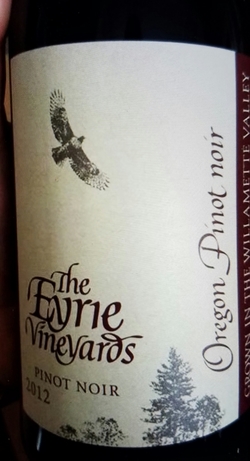 As much as I wanted a hot drink while visiting with friends last night, I was more than happy with the 2012 Eyrie Vineyards Pinot Noir that they served. This Pinot Noir is from the Eyrie Winery in Williamette Valley, Oregon. It is a blend of 84% estate grown Pinot, and 16% is sourced from the Cattrall Brothers, Pearl, and Bishop Creek Vineyards. The color is bright red with intoxicating aromas of dark fruit, cherries, spice and a touch of earth. The palate offers intense layers of dark cherry, dark berry, rich spice, and raspberry coupled with a savory and fruit driven finish. This is a silky and medium-bodied wine with lively acidity and is beautifully balanced. This wine is a true gem! Pairs well with most any food such as fish, meat, fowl, pasta, stews and chocolate desserts! http://www.eyrievineyards.com Alcohol: 13.5% Stay warm and have a great Thursday!
Cheers! Penina  My beautiful niece came to visit on Thursday. At the age of twenty, she has had more travel adventures than most of us achieve in a lifetime! She attended her first year of college in Florence, Italy with weekend trips all over Europe. The first half of her third year of college was spent in Paris. She plans on a 3-week excursion to Southeast Asia during her senior year and upon graduation, a month in Viet Nam. She has visited many museums, wineries and attended numerous cultural events throughout Europe. I asked her if she would please pack me in her suitcase next time she goes away! We shared many stories and got caught up on life while dining at an upbeat restaurant called Willy Nicks in Katonah, NY. Although the waiter kept calling us “girls” one too many times, the food was delicious! We dined on Sesame Tuna Crunch salad made with water chestnuts, carrots, pickled ginger, peppers and wakame with a chile-lime vinaigrette. The tuna was seared to perfection and every mouthful was a wonderful taste and texture sensation. 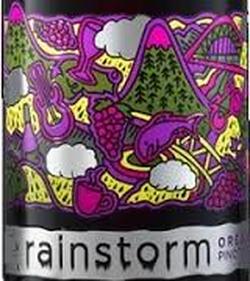 I enjoyed a glass of 2012 Rainstorm Pinot Noir from Oregon with the meal. The Pinot Noir grapes come from vineyards located in the Willamette and Umpqua Valleys. The Willamette Valley is situated in northern Oregon, which produces Pinot Noirs with more earthy tones and complexity. While the hotter and drier climate of Umpqua Valley located in southern Oregon produces a richer and fruitier flavor Pinot Noir. Rainstorm’s Pinot Noir is a 50/50 blend of these two wine regions. The color of the wine was soft ruby with subtle berry aromas. The palate had a fresh fruit feel, offering cherry, cranberry and a little spice. It was a little “chewy” with a warm finish. The label is a whimsical depiction of Portland showing salmon, coffee, guitars, clouds and wine grapes. http://pinotpassion.com This is going to be a whirlwind weekend. I’ll be back on Monday!
Happy Saturday! Cheers! Penina  I hope that everyone had a great Thanksgiving! I certainly did! Family and friends filled up my home with good cheer as well as the wonderful aromas of food emanating from the kitchen.  As usual, I made more food than was necessary and now I will have fun getting inventive with all the leftovers. Of course I overdid it with the desserts, so perhaps I’ll put together little dessert packages for a few people today. 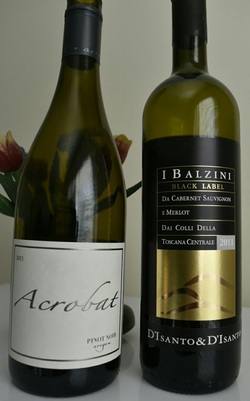 Two wines graced the Thanksgiving table yesterday. We opened a 2013 Acrobat Pinot Noir from Oregon and a 2011 I Balzini Black Label. Both wines complemented the meal from appetizers to dessert. I reviewed the I Balzini a few weeks ago. You can read it at http://thewineknitter.com/1/post/2015/11/day-375.html The Acrobat Pinot Noir comes from the King Estate Winery, founded in 1991. The color of the wine was cherry red with aromas of expressive berries and spice. The palate offered smooth and velvety flavors of cherry, plum and cranberry with hints of oak and spice. The finish was long. https://www.kingestate.com It’s a beautiful day and time to start changing the décor inside and outside to acknowledge the upcoming holidays.
Have a great Friday! Cheers! Penina  Trying to play catch up. After digging out of yet another snowstorm, I’m putting the brakes on for a short spell so that I can tell you about some wines that I tasted on Saturday. The first one we tried was a 2013 Orogeny Pinot Noir, from California’s Russian River Valley. It was a ruby color with cherry and pomegranate on the nose with flavors of cherry, spices and a hint of oak. It was well balanced with a spicy finish. The next wine was a 2012 A to Z Pinot Noir from Oregon. It was a typical Pinot with lots of fruit and flowers on the nose. On the palate the fruit continued with spices and a tangy quality. It had a nice finish. And now, on to France and a 2011 Louis Max Mercurey Vignes du Domaine. It was a lovely Pinot Noir from Burgundy. This garnet colored Pinot had plums and cherry on the nose. It had more of a spice taste than fruit, but was a nice balance with smooth tannins. My last taste was a Pinot Noir from Germany. It was a 2012 Diehl Spatburgunder from Pfalz. This was an interesting wine. Very dark red with cherry and black fruit on the nose. Flavors of spice and earth were nicely balanced with the fruit. It was soft with a medium finish. 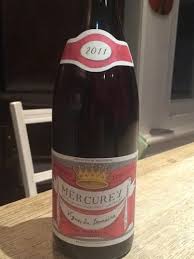 My favorite was the Pinot from Burgundy. Must run!
Happy Monday! Cheers! Penina  The sun is shining and it’s a great start to the day!  I got together with a few people last night for a gourmet “take out” dinner and wine. Sometimes all you need is good friends, a few belly laughs and warm hugs! 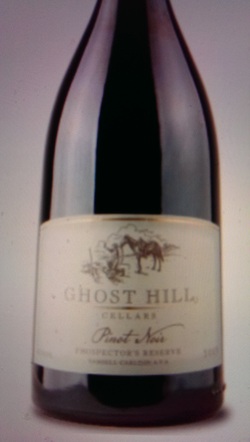 We drank 2011 Ghost Hill Cellars Prospector’s Reserve Pinot Noir, Yamhill-Carlton District in Oregon. I’m not that familiar with Oregon wines, but this was a winner! The Yamhill-Carlton District is about 35 miles south of Portland. The first vineyards were planted in the 1970s and not recognized as an AVA (American Viticultural Area) until 2004. The color of this wine was bordering on purple with lovely aromas of dark cherry, nuts and a hint of floral. The dominant flavors were cherry and strawberry with undertones of spice. Well balanced with a long “jammy” finish made this wine an attention getter. http://www.ghosthillcellars.com I have another busy day ahead of me! And, yes…I’m working on my knitting design!
Happy Wednesday! Cheers! Penina |
Categories
All
|







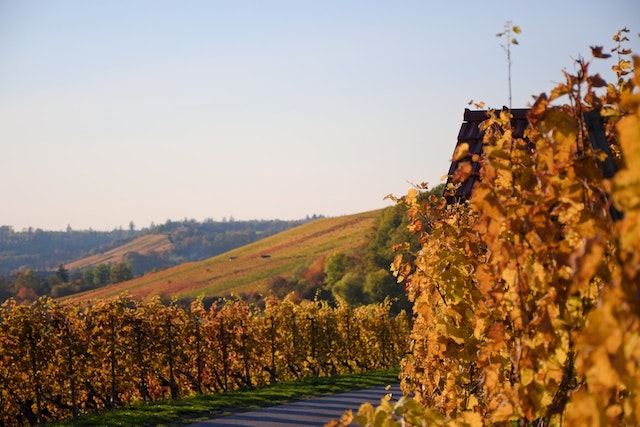
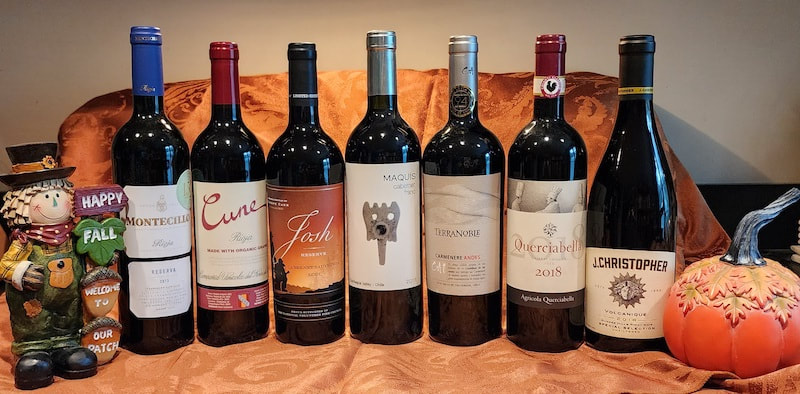
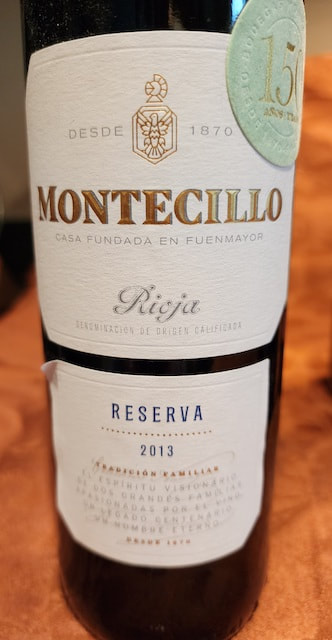
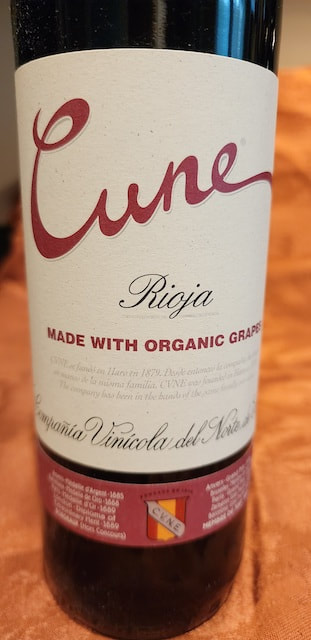
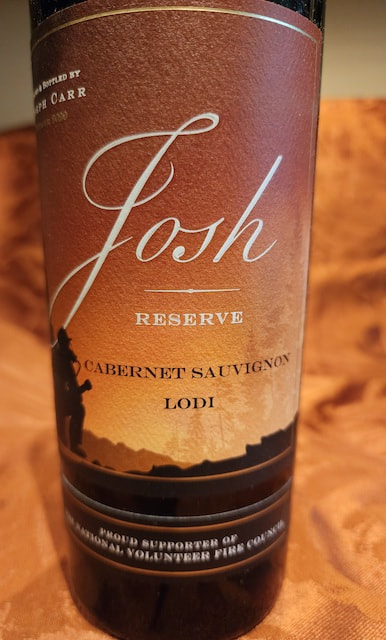
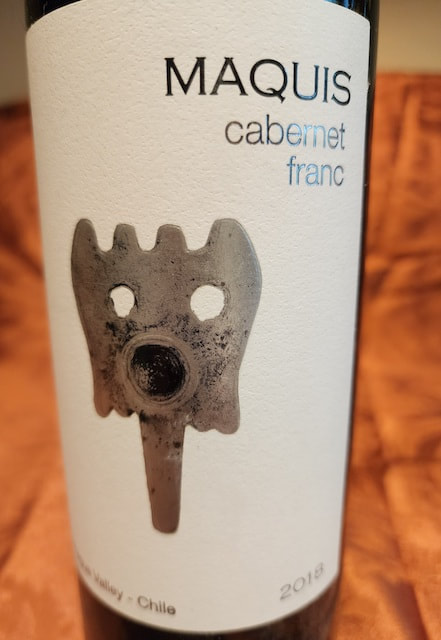
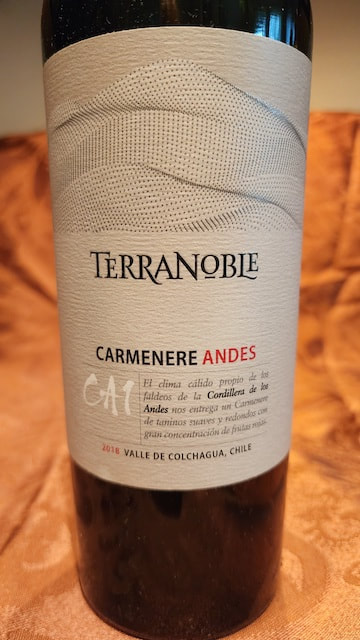
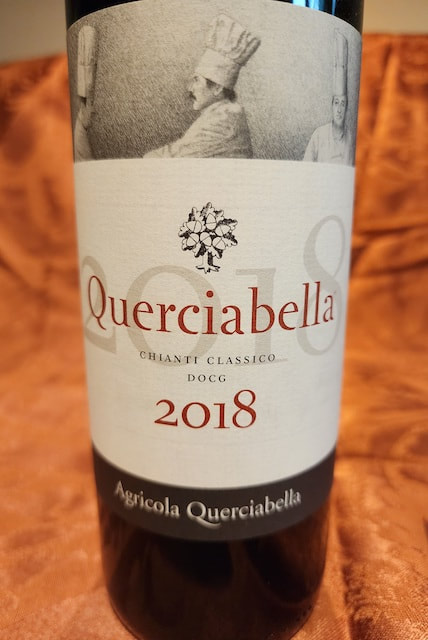
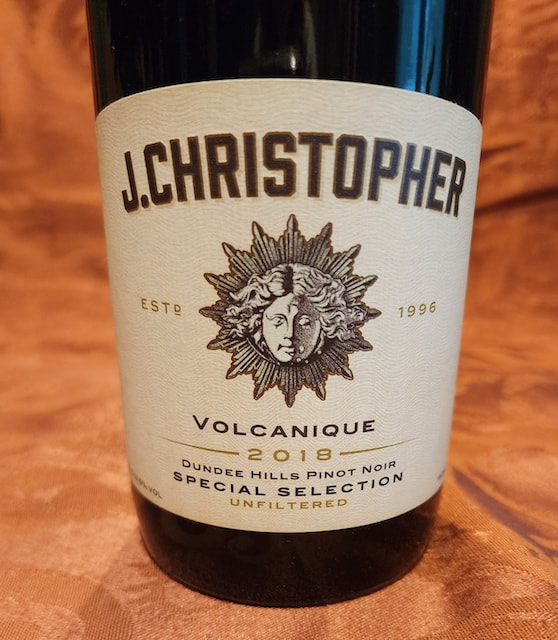
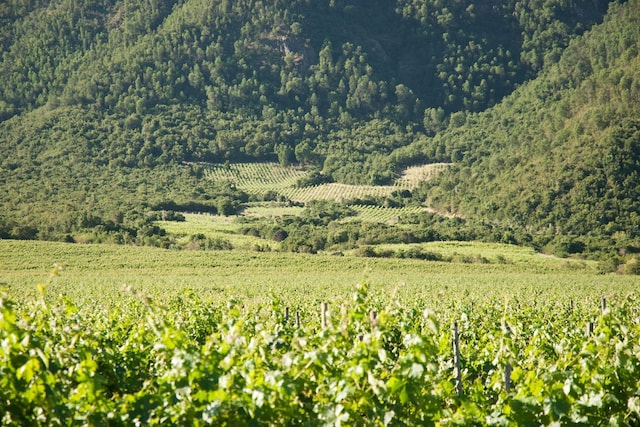
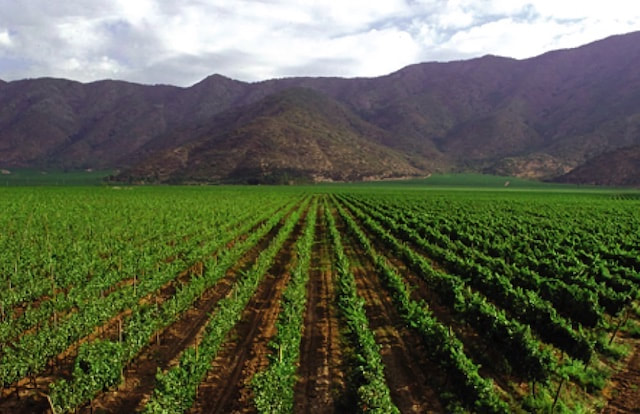
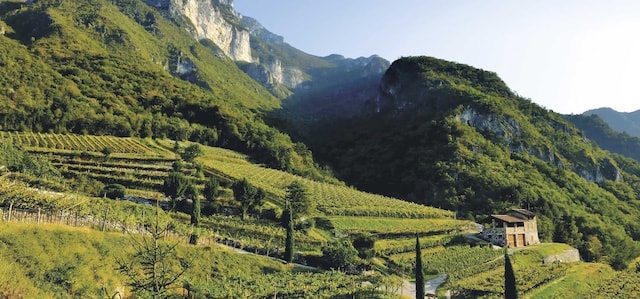
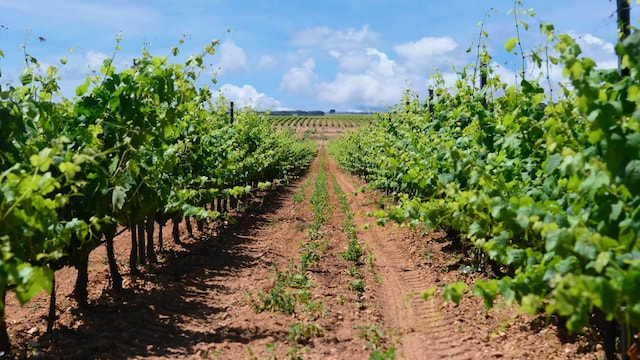
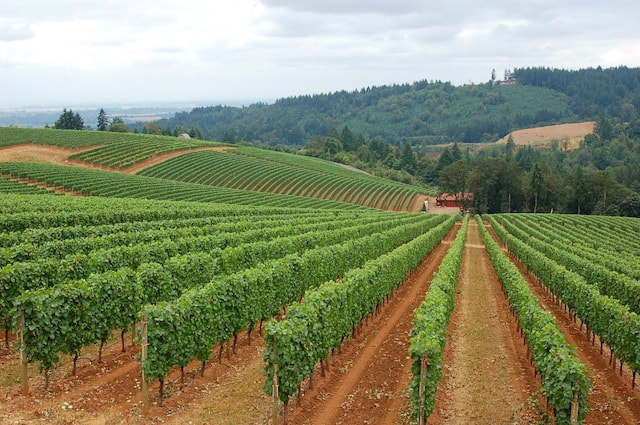
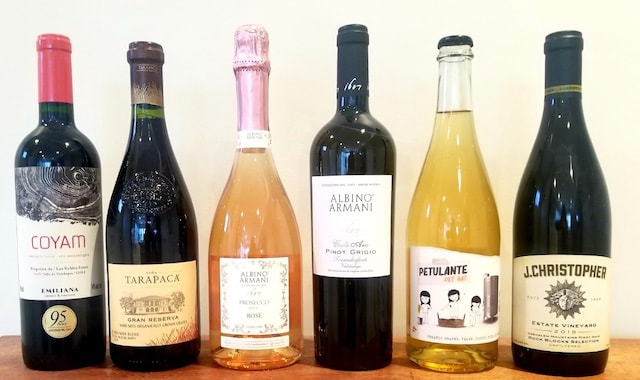
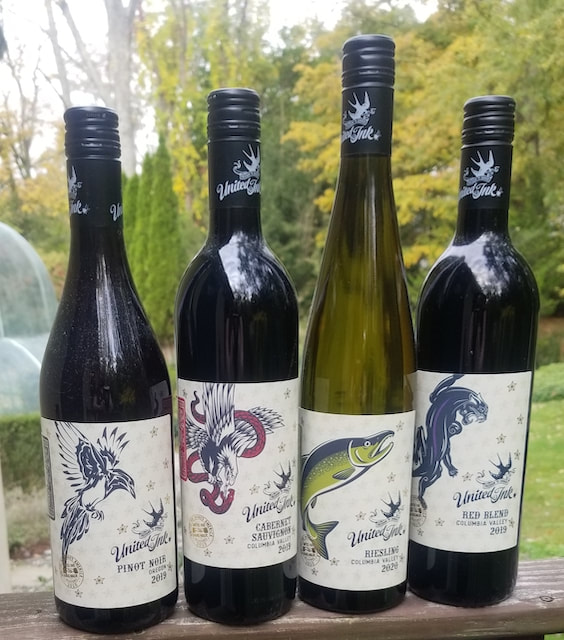
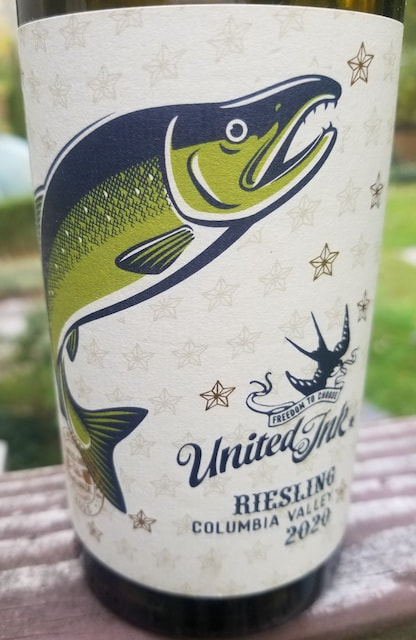
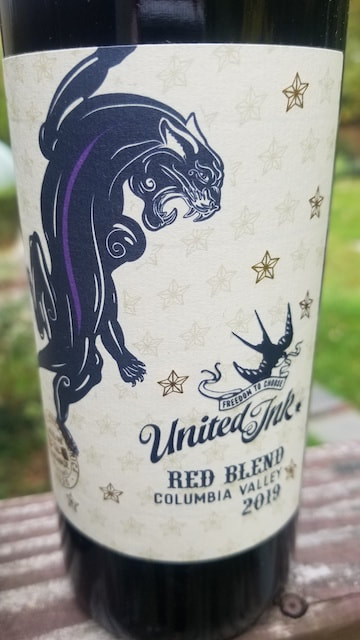
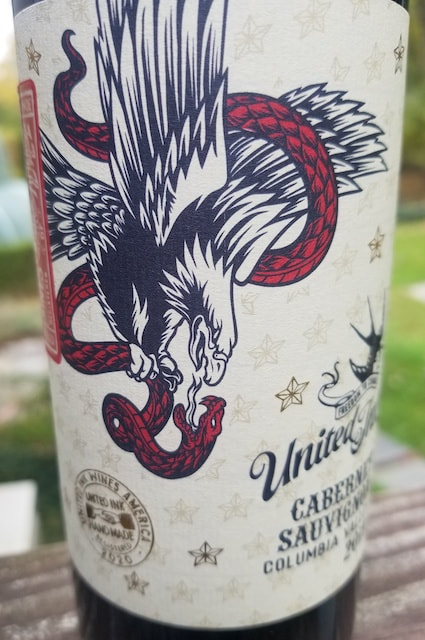
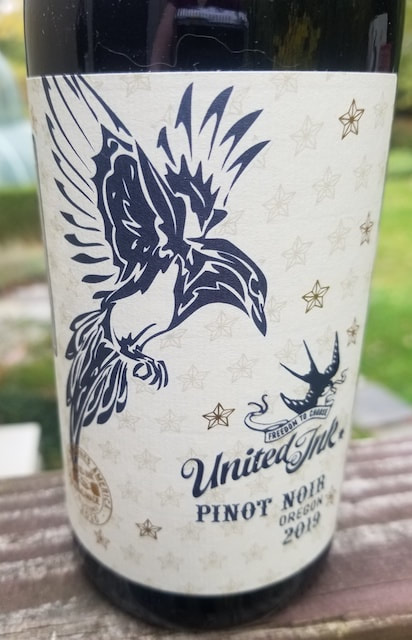
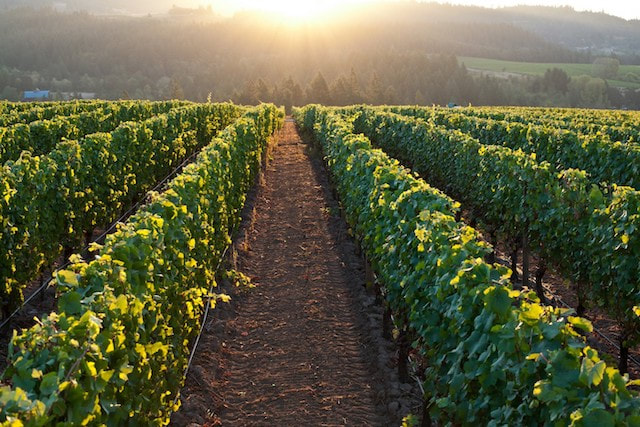
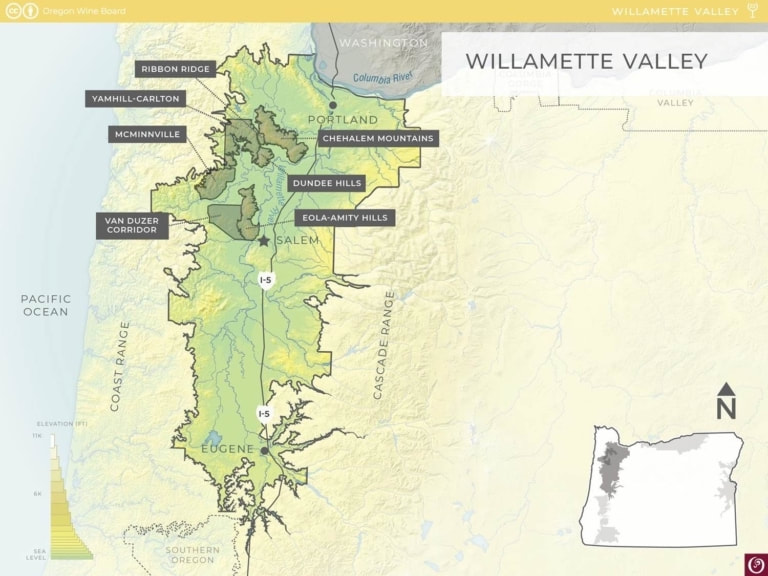
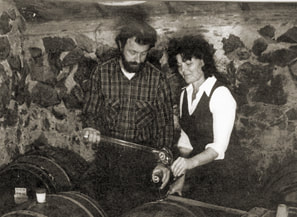
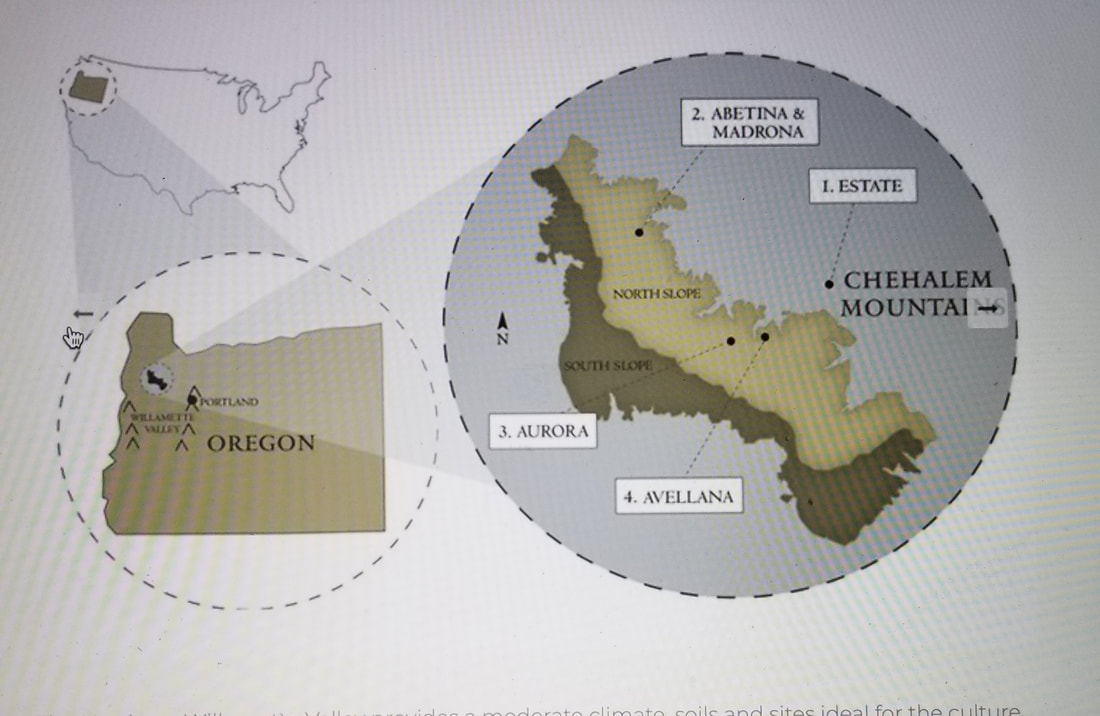
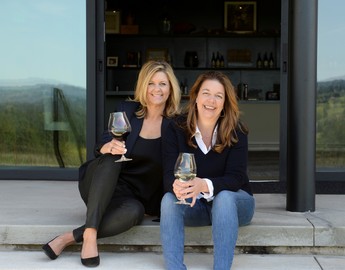

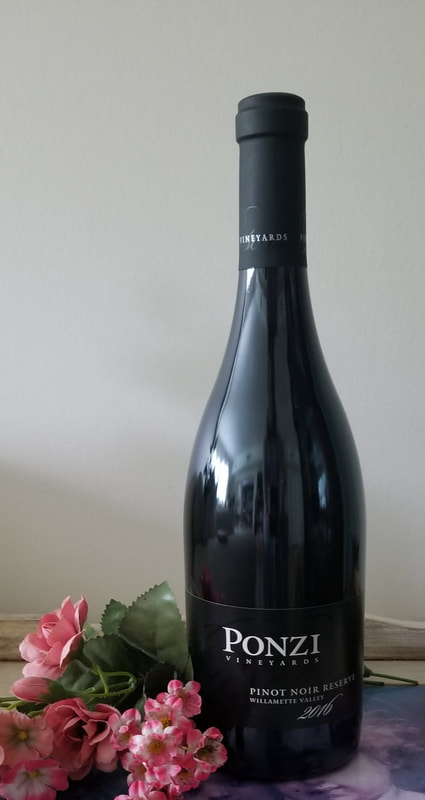

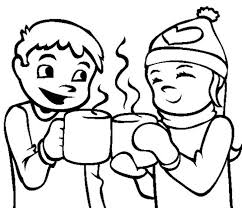

 RSS Feed
RSS Feed